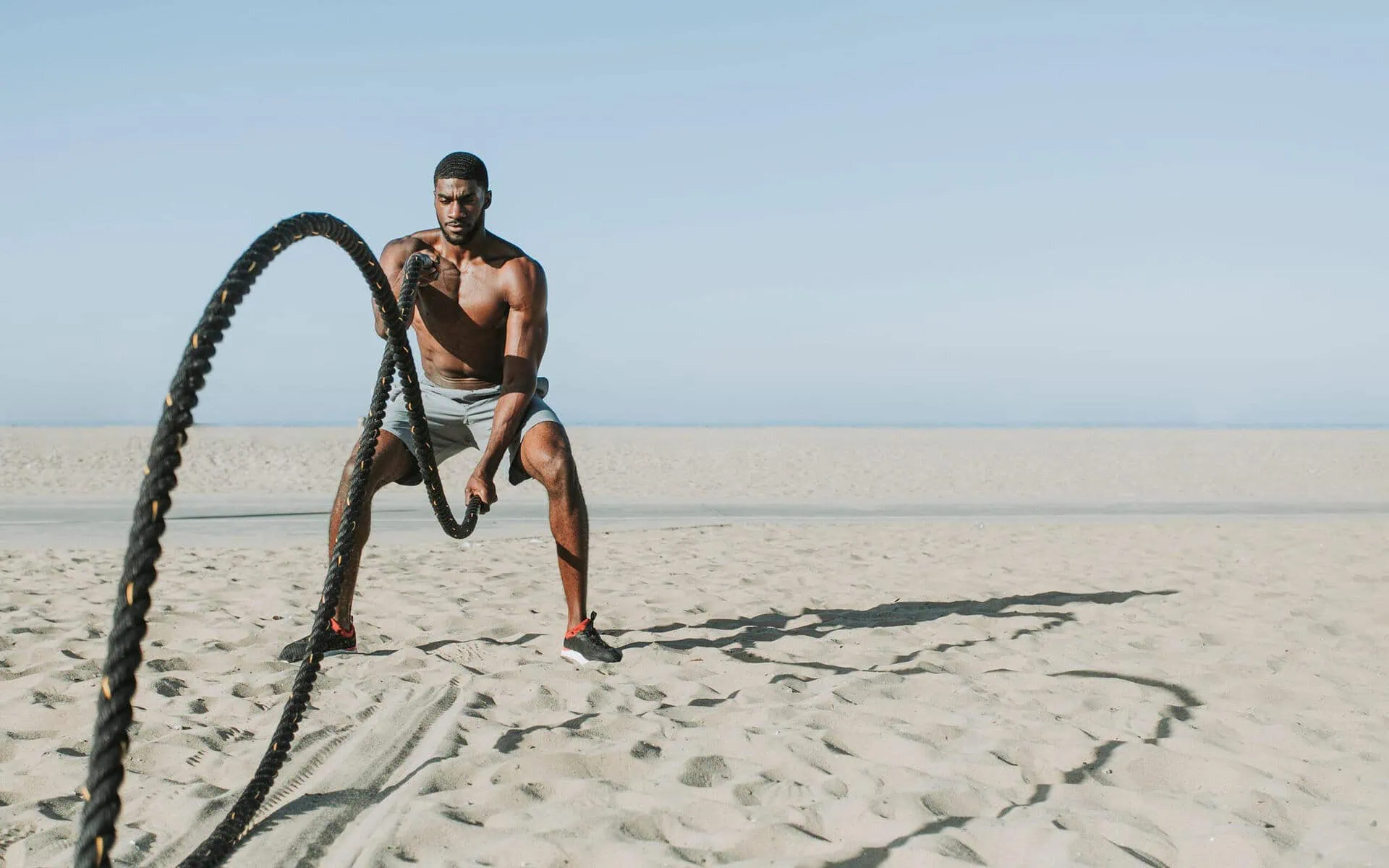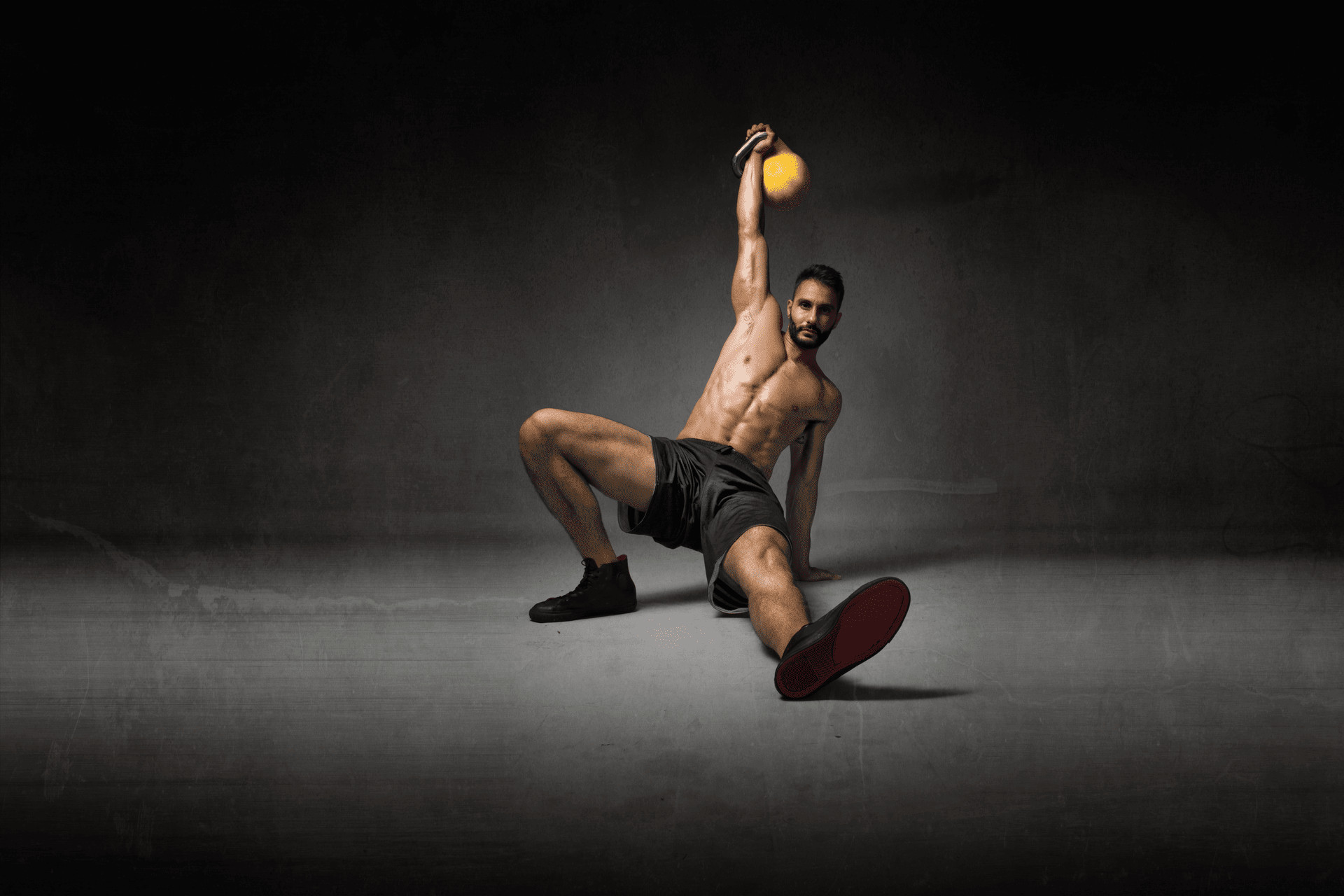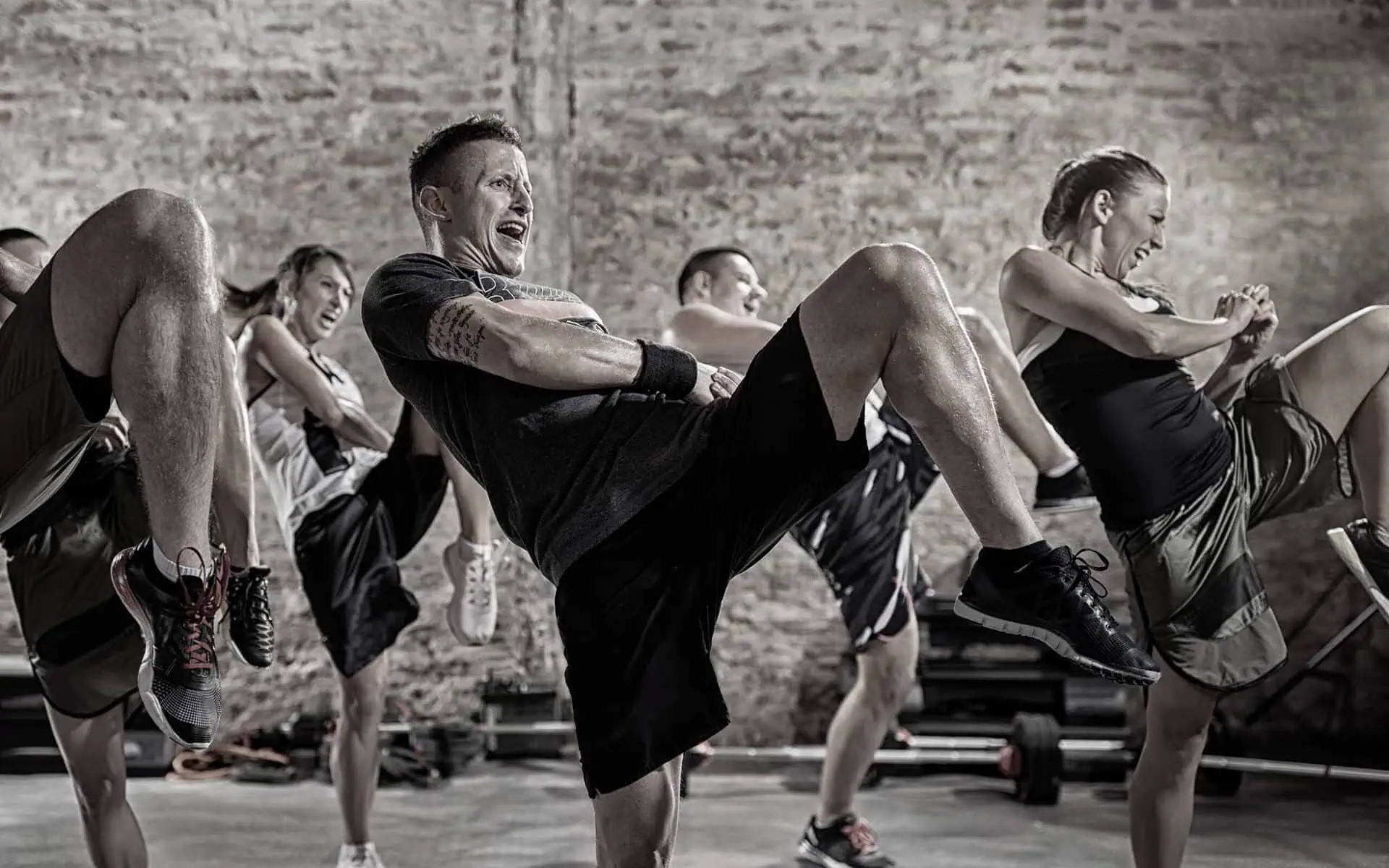Combat Arts Strength and Conditioning: Achieve Peak Performance
Ready to stream your strength and conditioning with your combat arts aspirations? Boost your performance with a dedicated combat arts strength and conditioning regimen. Strategic approaches help improve both physical fitness and technical expertise in martial arts. This combination of skills will turn you into a formidable combat arts athlete.
Streamlining Strength and Conditioning with Your Combat Arts Aspirations

An effective combat arts strength and conditioning program should complement your routine, augmenting your martial arts practice rather than overshadowing it. Let's consider a passionate Brazilian Jiu Jitsu (BJJ) practitioner aiming to upgrade their abilities. A strength and conditioning program can improve your endurance during sparring. It can also help your escapes and takedowns become more effective. Additionally, it can strengthen your grip and increase your hip mobility for a powerful guard.
Achieving Peak Performance while Preventing Injuries
But how can you gain these desirable traits? With a focused combat arts strength and conditioning routine, these attributes can progress from being aspirational to achievable.
A top-tier combat arts strength and conditioning program aims for two main outcomes: injury prevention and performance boost. Balancing these factors ensures you maximize your time mastering your art while minimizing downtime from injuries.
Focused Conditioning Exercises for Combat Arts Progress
It's essential to ensure that every exercise in your strength and conditioning routine directly contributes to your MMA proficiency. Many athletes expend valuable time on generalized workouts that don't dovetail with their MMA objectives. Training approaches like "chest and triceps" workouts or cross-fit WODs, or even long-distance running, may seem like progress. However, they may not be in line with your martial art goals.
Those all sound like worthy attributes that any BJJ enthusiast would long for. The question is, how do you get there? Do you just keep training and hope that they magically manifest into reality over time?
Merging Martial Arts Practice and Strength Training
Transitioning from unguided hard work to a smart, strategic MMA strength and conditioning routine is a game-changer. Merging focused weight training with your regular martial arts practice is the key to molding a comprehensive MMA athlete. Just honing your martial art or merely focusing on strength training for bigger muscles or increased power isn't enough. These two facets should synergize, pushing towards your overall growth
Launching Your Strength & Conditioning Journey
Initiating an MMA strength and conditioning program begins with a primary focus on avoiding injuries. Prioritizing movement quality and efficiency ensures fluidity and a complete range of motion necessary for your martial art. Combat sports are inherently unpredictable; hence, building resilience against injuries is vital. Proper movement mechanics and mobility serve as your first line of defense.
Addressing and Improving Your Physical Limitations

A top-notch strength and conditioning program pinpoints and improves limitations in your range of motion, mobility, and flexibility. You can improve these areas by using different strategies. For example, yoga, "animal movement" routines, or working with a Functional Range Control (FRC) practitioner. Once you've established a solid foundation, you can then devise personalized plans to elevate your strength and power.
Implementing a Variety of Training Modalities
Planning to increase your strength and power can involve many different activities. Weight training, speed drills, agility training, Olympic lifting and unconventional techniques such as using kettlebells, maces and sandbags are all beneficial. Additionally, cardiovascular exercise and lactate threshold training are also important.
Our Strength Training article provides an exhaustive look into these training modes. You have the basic principles set. Now, you can become a dynamic and high-performing combat arts athlete. You will have a minimized risk of injury and maximized recovery rates.
Optimizing Your Training Returns
Our mission at Fighting Arts Health Lab is to empower you to use the right tools at the right time. We want to give you more than just an extensive exercise list.
We also want to give you the knowledge to create an effective combat arts strength and conditioning program. This strategy ensures optimized training results, prevention of injuries, and enhanced combat performance. We're here to support you in becoming the best mixed martial arts athlete you can be.

Once you have the fundamentals in place, you can work to become a dynamic athlete. You'll be able to perform at their best while reducing the risk of injury and speeding up recovery.
Navigate the strength and conditioning section to find several cornerstone articles. These articles provide a comprehensive overview of the various Strength and Conditioning training aspects:
By exploring these posts, you'll further reinforce your understanding and authority in the realm of strength and conditioning for combat sports. We invite you to start a journey of personal growth and discovery challenge yourself and unlock your potential.
Now, let's dive into the details of each section. Uncover your true potential in the realm of MMA strength and conditioning.
Components of Fitness
In the world of mixed martial arts, success hinges upon the mastery of multiple physical attributes. Developing a comprehensive understanding of fitness components is essential for becoming a well-rounded combat athlete.
This understanding contributes to peak performance. At Fighting Arts Health Lab, we emphasize the importance of honing strength, coordination, and agility. This enables you to reach your full potential in the octagon or on the mat.

Strength: Unleash Your Inner Beast: Building Unstoppable Strength for Combat Arts Domination
Strength forms the foundation of any successful combat athlete. It allows you to generate power in strikes, execute takedowns, and maintain control in grappling exchanges.
A good weight training program focuses on building functional strength. Using compound exercises, resistance training, and bodyweight movements tailored to combat sports, help achieve optimal results.
Endurance: Outlast and Conquer: Mastering Endurance for Championship Success
Endurance is crucial for sustaining high-intensity efforts throughout the duration of a fight. Combat Arts demands both aerobic and anaerobic endurance, as bouts often involve explosive bursts of activity followed by periods of active recovery.
Conditioning drills and cardiovascular exercise can help improve your performance. They will help you maintain a high work rate while using less energy. This will result in peak performance.
Power: Harness the Fury - Unleashing Explosive Power in Every Strike
Power is the ability to generate force quickly, translating to devastating strikes and explosive movements.
Power development can be achieved through training. Plyometric exercises, Olympic lifts, and sport-specific explosive drills can be used to accomplish this. By enhancing your power, you'll have the upper hand in striking exchanges and explosive takedowns.
Speed: Lightning Strikes - Accelerate Your Speed for Lightning-Fast Combat Arts Performance
Speed plays a critical role in combat arts, allowing you to evade strikes, initiate attacks, and swiftly transition between positions. Incorporate training protocols such as speed drills, agility exercises, and reaction training to enhance your overall quickness and agility. By improving your speed, you'll gain a significant advantage over opponents who are unable to match your lightning-fast movements.
Agility: Cat-like Reflexes - Agile Training Secrets for Outmaneuvering Opponents
Agility refers to your ability to change direction quickly and efficiently. It's crucial for evading strikes, executing complex footwork, and maintaining balance during dynamic exchanges. A training regimen will focus on three areas: agility drills, ladder exercises, and coordination training. This is to enhance your footwork and general agility in the octagon or the mat.
Flexibility: Fluidity Unleashed - Enhancing Flexibility for Unstoppable Performance
Flexibility is often overlooked but is vital for injury prevention and maximizing your range of motion. Improved flexibility allows for fluid movements, reduces the risk of muscle strains, and enhances your ability to execute techniques effectively. A flexibility program should incorporate stretching exercises, yoga, and mobility work to enhance your overall flexibility and joint mobility.

Balance: Grace Under Fire - Enhancing Balance for Supreme Octagon Control
Balance is essential for maintaining stability during strikes, takedowns, and ground-based grappling. It enables you to stay grounded, defend against takedowns, and execute techniques with precision. Leverage training protocols that include balance drills, proprioceptive exercises, and core stabilization work to improve your balance and body control.
Address each component of fitness to develop a well-rounded skill set. This will position you as a powerful presence in the fighting arts arena. You can explore the concepts outlined above in more detail in our Components of Fitness article.
Now, we will look into the next important part of combat arts training: Energy Systems.
Energy Systems and Cardiovascular Training
Fights are intense, fast-paced, and demand exceptional cardiovascular endurance.
Understanding the energy systems at work is crucial for success in the octagon or on the mat. Developing a well-conditioned cardiovascular system is essential. Focusing on optimizing energy systems during cardio exercises will help you perform at your peak during each round.
Understanding the Key to Optimal Performance
Combat Arts relies on two primary energy systems: the aerobic and anaerobic systems. The aerobic system provides sustained energy over longer durations, while the anaerobic system supplies immediate bursts of power and strength.
Understanding how these energy systems contribute to different aspects of a fight is key to developing an effective training plan.

The Aerobic System: Endurance for the Long Haul
The aerobic system acts as the foundation for sustained performance in the Combat Arts. It primarily relies on oxygen to generate ATP, the body's energy currency. When engaged in longer bouts, such as championship fights, the aerobic system becomes indispensable.
Professional MMA fighters like Conor McGregor have honed their aerobic capacity through rigorous training, enabling them to showcase impressive endurance and consistency throughout matches.
ATP-PC System: Explosive Power in the Blink of an Eye
For lightning-fast movements and explosive power, the ATP-PC system takes the stage. This system utilizes phosphocreatine (PC) to rapidly replenish ATP stores, providing short bursts of high-intensity effort. Prominent MMA fighters like Israel Adesanya utilize the ATP-PC system to deliver lightning-quick strikes and agile footwork, allowing them to dominate opponents with their explosive prowess.
The Oxidative System: Sustained Power with Oxygen's Assistance
Combining elements of both the aerobic and anaerobic processes, the oxidative system provides sustained power during longer bursts of intense effort. The body relies on oxygen to break down fuel sources such as carbohydrates and fats. This system produces ATP more slowly, but in larger quantities.
MMA fighters like Khabib Nurmagomedov effectively utilize the oxidative system to maintain high-intensity grappling exchanges, overpowering opponents with relentless pressure.
The Lactic Acid System: Pushing Beyond Limits
When it comes to intense, all-out efforts, the lactic acid system takes the spotlight. During high-intensity activities like explosive strikes or takedowns, glucose is broken down to produce ATP and lactate.
Contrary to popular belief, lactate accumulation is not responsible for muscle fatigue; in fact, it serves as an additional fuel source. Athletes such as Amanda Nunes, known for her aggressive fighting style, leverage the lactic acid system to unleash relentless attacks on their opponents.
Strength Training for the Fighting Arts
Strength is the foundation of power, explosiveness, and physical dominance in mixed martial arts. As a combat athlete, it is essential to develop functional strength that translates directly into the demands of the sport.

Importance of Strength Training
Strength training plays a pivotal role in enhancing performance, preventing injuries, and maximizing overall physical capabilities. Engage in a well-structured weight training program and you will improve your ability to generate force.
Additionally, you will be able to execute explosive movements. Lastly, you will be able to maintain control in grappling exchanges. Developing strength will also enhance your power output, muscular endurance, and resilience to fatigue during fights.
Tailoring Strength Training
Emphasize the importance of tailoring strength training specifically for the Combat Arts. Programs should include a mix of compound exercises, functional movements, and sport-specific drills. This will ensure the best transferability to the needs of the octagon or on the mat.
Focus on developing full-body strength, core stability, and muscular balance to promote well-rounded physical development.
Resistance Training
Resistance training forms the backbone of any effective weight training program. By utilizing free weights, machines, and bodyweight exercises, you will enhance your muscular strength, hypertrophy, and neuromuscular coordination.
Strength and conditioning coaches design training protocols that focus on compound exercises. These include squats, deadlifts, bench presses, and overhead presses. These exercises target multiple muscle groups at the same time.
Power Development
Power is the ability to generate force quickly, making it a critical attribute in the Combat Arts.
Strength training should include power development exercises. Examples include Olympic lifts, plyometrics, medicine ball throws, and bodyweight movements. These activities should be done explosively for best results.

These exercises improve your rate of force development, agility, and ability to deliver powerful strikes or explosive takedowns.
Muscular Endurance
In Combat Arts, muscular endurance is essential for maintaining optimal performance during prolonged bouts. Training protocols should include high-repetition sets, circuit training, and sport-specific conditioning exercises. This is necessary to enhance muscular endurance.
This training will help you stay productive. You'll be able to use techniques accurately, even when tired. Plus, you'll be able to recover quickly between exchanges.
Periodization and Progression
To ensure continued progress and prevent plateaus, we advocate for periodization and progression in weight training.
Programs designed to systematically vary the intensity, volume, and exercise selection are essential for muscular growth. This helps to optimize gains and prevent overtraining.
Focus on periodizing your training. This means adjusting your training program to peak for specific events or fights. Ensure that you reach your optimal performance level when it matters most.
Our cornerstone Strength Training article will provide more detailed guidance on the information above. It also offers exercise demonstrations and training plans which will help you unlock your true physical potential as a combat athlete.
Next, let's explore the significance of physical conditioning in the Combat Arts and how it contributes to your overall performance.
Unleash Your Fighting Spirit: Mastering Cardiovascular Conditioning
Cardiovascular fitness forms the backbone of success in combat sports. As a combat athlete, the demands placed on your cardiovascular system during training and fights are intense. Having a strong cardiovascular system is essential for enduring long rounds of exercise. It allows us to keep performing at a high level and recover quickly between sets or rounds.
Understanding Cardiovascular Conditioning
Enhanced cardiovascular fitness allows for efficient oxygen delivery to working muscles, delaying the onset of fatigue and enabling sustained output. It also contributes to improved endurance, enabling you to maintain a relentless pace and stay competitive throughout the fight.
A well-conditioned cardiovascular system improves your recovery during rest. This helps you to quickly prepare for the next round. Prioritizing cardio exercises builds a strong base for performance. This allows you to challenge yourself, defeat opponents, and become successful in the Combat Arts.

Cardiovascular conditioning is essential for success. Renowned MMA fighters like Conor McGregor, Georges St-Pierre, or Amanda Nunes, demonstrate this. Their exceptional cardiovascular fitness has allowed them to reach the highest levels of their sport.
Basics of Sport-Specific Cardiovascular Conditioning
To excel in MMA, it is essential to adopt a comprehensive approach to cardiovascular conditioning. This involves incorporating various cardiovascular exercise methods and techniques to optimize your cardiovascular fitness.
Integrate these methods into your training regimen to enhance your performance. Dominate in the octagon or on the mat. Leave your opponents in awe.
Aerobic Conditioning Methods
Maximizing Aerobic Function (MAF)
One effective method of cardiovascular conditioning in Combat Arts is maximizing aerobic function, commonly known as MAF. This approach involves training at a specific heart rate that allows your body to tap into its aerobic energy system efficiently.
Incorporate MAF training into your routine to boost your aerobic capacity. This will also improve your body's ability to use fat as a fuel source. Athletes Vasyl Lomachenko and Terence Crawford have used MAF training to increase their endurance and stamina in boxing matches. This training has been successful in helping them achieve their goals.
Polarized Training for Cardiovascular Conditioning
Another powerful strategy for optimizing cardiovascular fitness in Combat Arts is polarized training. This approach revolves around alternating between high-intensity and low-intensity workouts, ensuring a balanced training stimulus. By incorporating intense intervals and active recovery periods, polarized training improves your anaerobic capacity while enhancing your aerobic endurance.
World-class boxers like Canelo Alvarez and Tyson Fury have adopted polarized training as part of their routines. This helps to improve their cardiovascular fitness and dominance in their weight divisions.
High-Intensity Interval Training (HIIT): Unleashing Explosive Power and Endurance
High-Intensity Interval Training (HIIT) is popular among combat athletes. It helps them to build explosive power and endurance. HIIT involves performing short bursts of intense exercise followed by brief recovery periods.

This training method simulates the demanding nature of MMA fights, where explosive bursts of energy are required. Famous fighters such as Manny Pacquiao and Anthony Joshua have used High-Intensity Interval Training (HIIT) to improve their cardiovascular fitness. This has allowed them to last longer in the ring and outlast their opponents.
Consider integrating Combat Arts strength and conditioning coaches' training methodologies into your training regimen. This will equip you to perform at your best. More importantly, adding sport-specific conditioning drills to your regimen will contribute to optimal performance.
Get more detailed, in-depth content visit our cornerstone Cardiovascular Conditioning article.
Strength and Conditioning Goal Setting
Goal setting is a powerful tool that can propel you toward success in your Combat Arts strength and conditioning journey. Set SMART goals to provide you with a clear direction. These goals also serve as a roadmap to track progress and maintain motivation.
Importance of Goal Setting
Goal setting provides a sense of purpose and focus to your training. By defining what you want to achieve, you create a target to strive for and a benchmark to evaluate your progress. Clear goals enhance motivation, guide your training decisions, and ensure that every workout brings you closer to your ultimate objectives.
Setting SMART Goals
SMART goal setting is a successful approach. Setting specific goals can help you define the exact outcome you desire.
Measurable goals provide an objective way to track your progress. Goals should also be achievable, relevant, and time-bound.
Achievable goals are realistic and within your reach, while relevant goals align with your broader aspirations in the Combat Arts. Time-bound goals are set with a specific timeline in mind, creating a sense of urgency and accountability.
Short-Term and Long-Term Goals
In the Combat Arts, it's essential to set both short-term and long-term goals. Short-term goals focus on immediate improvements and can be achieved within a few weeks or months. These goals might include increasing your strength in specific exercises, improving your cardiovascular endurance, or refining your technique.
Long-term goals are broader achievements over a longer period. Examples are winning a championship or reaching a specific rank.
Setting goals is key to staying motivated on your Mixed Martial Arts journey. Short-term goals can help you see progress quickly. Long-term goals can provide a greater sense of purpose.
Monitoring and Adjusting Goals
Regularly monitoring your progress is crucial to staying on track and adjusting your goals as necessary. Evaluating your performance allows you to identify areas of improvement and make the necessary adjustments to your training program.
By assessing your progress objectively, you can celebrate milestones, identify potential obstacles, and modify your goals accordingly.
Creating Accountability
Accountability is key to staying committed to your goals. Share your goals with a trusted coach, training partner, or mentor who can provide support, guidance, and accountability. Track your progress with training logs, performance assessments, and regular check-ins. This will help you stay accountable and consistent in your training.

Our article on Goal Setting provides strategies, training plans, and expert advice. It will help you stay focused, track progress, and reach peak performance in your martial art.
Our Martial Arts Focused Strength and Conditioning Posts Take You Above and Beyond
At Fighting Arts Health Lab, the strength and conditioning section offers more than just the basics. We provide advanced knowledge and cutting-edge techniques to help you reach the next level of Combat Arts performance.
Our strength and conditioning posts cover a range of topics, from enhancing combat arts power to advanced conditioning techniques and more. Each post is carefully crafted by industry experts to provide you with valuable insights and practical advice.

"11 Ways to Enhance Combat Arts Power Using Plyometric Training": Discover the power of plyometric training and its direct impact on combat arts performance. This post outlines 11 effective plyometric exercises specifically tailored for combat athletes.
Incorporate explosive movements into your training routine. This will help you develop power and speed. With these abilities, you can deliver devastating strikes and execute explosive takedowns.
"Efficient Superset Training for Those Aspiring to be Elite Combat Athletes": Learn the power of superset training and how it can maximize your training efficiency.
This post presents efficient superset strategies, pairing exercises strategically to target multiple muscle groups and boost your metabolic conditioning. Unleash your potential and optimize your training time with these superset techniques.
"Functional Circuit Training to Enhance Grappling Endurance That Grinds Opponents into Submission": This post focuses on circuit training specifically designed to improve your grappling endurance. Discover exercises and workouts that replicate the requirements of grappling.
This will improve your muscular endurance, grip strength, and general conditioning. Take your grappling game to new heights and outlast your opponents.
These are just a sample of the informative articles available in our Strength and Conditioning Posts section.
It's a Brave New World, Are You Ready?
We invite you to start a journey of personal growth and discovery. Discover a wealth of Combat Arts strength and conditioning knowledge in this section. Challenge yourself and unlock your full potential.

Frequently Asked Questions
How Do You Train Strength and Conditioning for MMA?
To train strength and conditioning for Mixed Martial Arts (MMA), you must incorporate a comprehensive regimen that boosts both power and endurance. This typically includes weightlifting, calisthenics, plyometrics, cardiovascular exercises, and sport-specific drills. Additionally, stretching and mobility work should be integral to maintain flexibility and prevent injuries. Tailoring your training to mimic the demands of an MMA fight is crucial for optimal performance.
What Do MMA Fighters Do for Strength and Conditioning?
MMA fighters follow a diverse strength and conditioning program that targets all aspects of physical fitness. They lift weights for strength, perform high-intensity interval training (HIIT) for cardiovascular conditioning, and do plyometrics for explosive power. Sport-specific training, such as grappling and striking drills, also plays a significant role in their regimen. Further, they focus on core exercises and mobility work to improve stability and flexibility.
Does Strength Training Help MMA?
Yes, strength training is an essential component of MMA training. It helps fighters deliver powerful strikes, resist takedowns, and execute grappling maneuvers. By enhancing muscular strength and power, fighters can improve their performance and durability in the ring. It's important to remember, though, that strength training for MMA should complement other aspects of fitness, such as endurance, flexibility, and speed.
How often should I lift weights for MMA?
MMA fighters typically incorporate weight lifting into their training regimen 2-3 times per week. This schedule allows adequate recovery time between sessions, reducing the risk of overtraining and injuries. However, it's important to remember that weight lifting should be a part of a holistic training program that includes cardio, flexibility, and sport-specific training.
How Do I Start Conditioning For MMA?
Starting conditioning for MMA involves building a foundation of strength, endurance, and flexibility. Begin with basic exercises like running, swimming, or cycling for cardio, weightlifting for strength, and stretching for flexibility. Gradually, incorporate MMA-specific drills and techniques. Always start at a pace that's suitable for your current fitness level and gradually increase intensity over time. It's advisable to work with a knowledgeable coach or trainer to ensure your training program is safe and effective.
